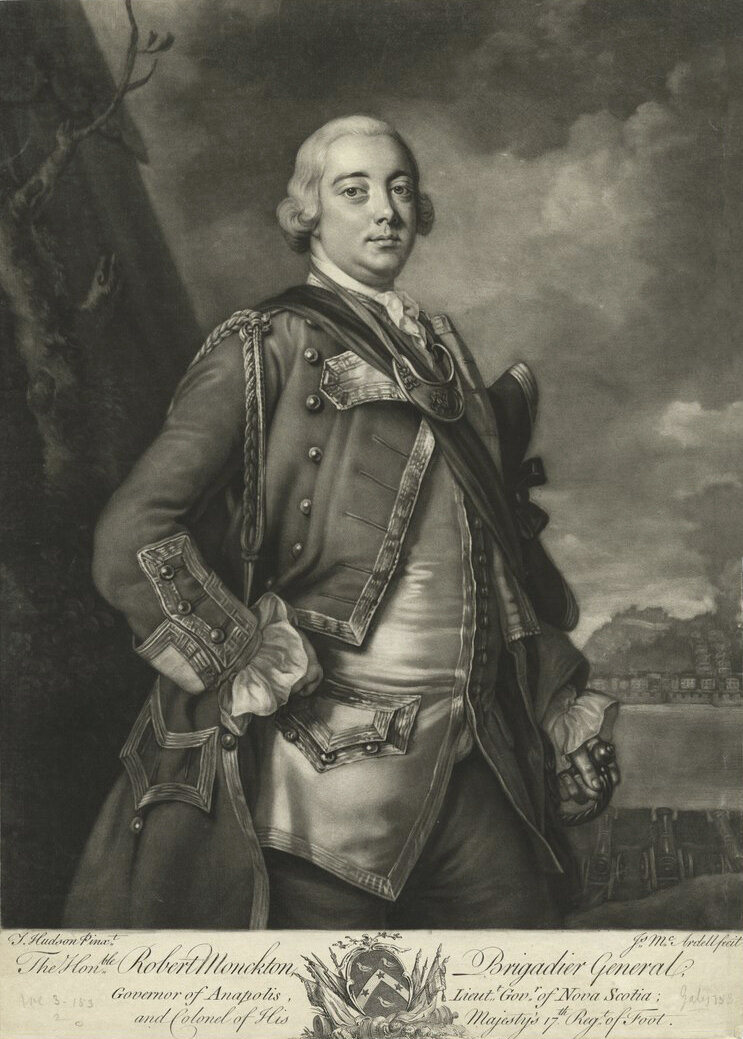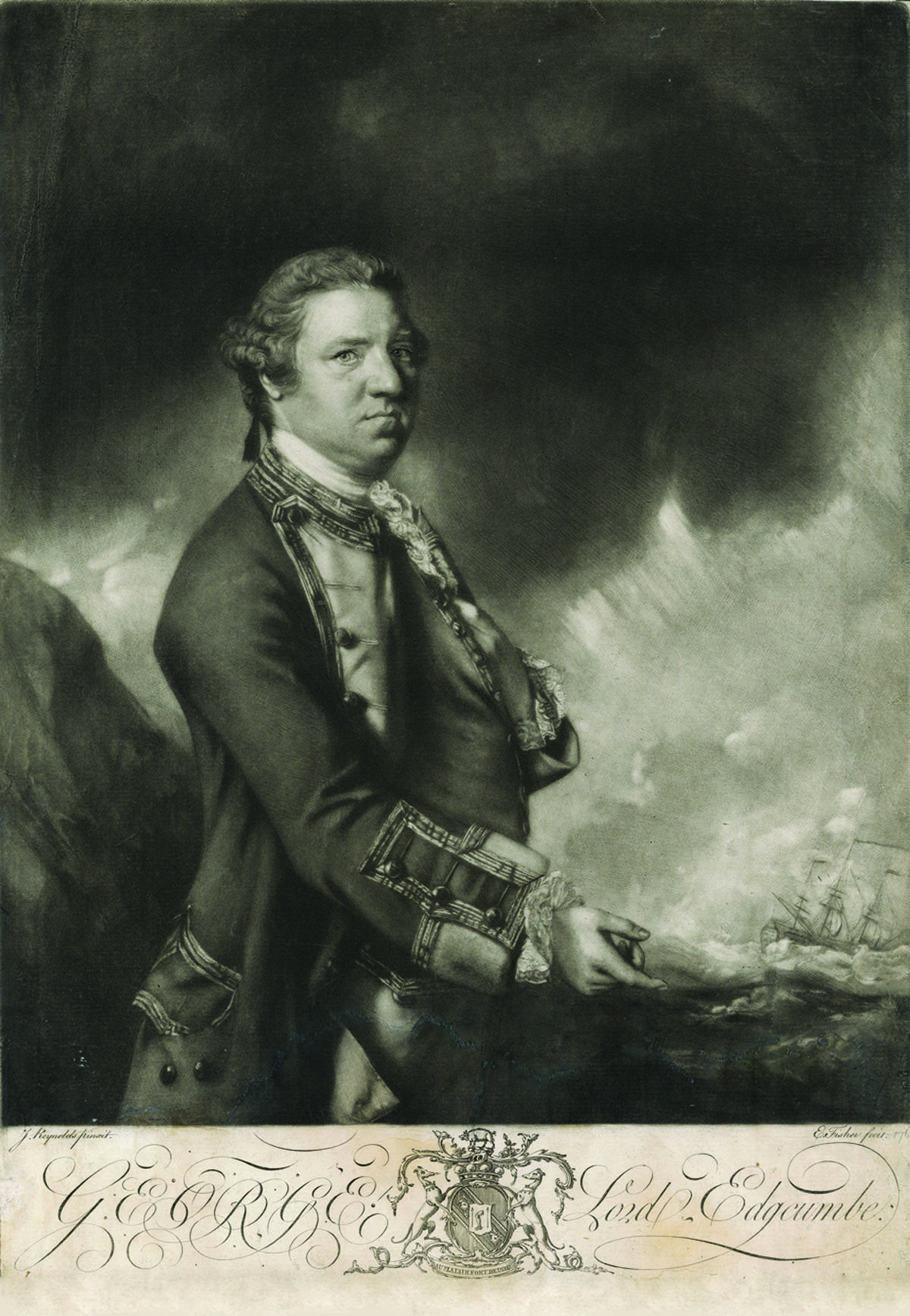James McArdell (1728-1765), after Thomas Hudson (1701-1779)
The Honorable Governor Robert Monckton Major General of New York and Colonel of His Majesty’s 17th Regiment, Mezzotint, c. 1750, The Noble Maritime Collection, Gift of Barnett Shepherd
Edward Fisher (1722-1781), after Sir Joshua Reynolds (1723-1792), George, Lord Edgcumbe, Mezzotint, 1761, The Noble Maritime Collection, Gift of Barnett Shepherd
Mezzotint
A mezzotint artist uses a copper plate to make a print. Before he can begin drawing on the plate, he first roughens it by systematically pricking it with a serrated rocker. When complete, each tiny prick has a burr, or curl, which holds ink. Rocking a plate takes time and effort, but slowly the entire plate will hold ink and proof a uniform and velvet black. Next, the artist creates tones, working from dark to light, by smoothing down the rough metal burrs with burnishing and scraping tools. The smoother the area, the lighter it will print.
To see his progress, the artist can make a proof. He spreads ink on the plate, wipes off the excess, places dampened paper on the plate, and passes them through the press. The mezzotint plate has a very limited number of proofs that it can offer before it starts to break down from the pressure exerted by the press. To strengthen the final surface for editioning, the artist can steel face, or add pure iron, to the plate by electro-deposition.


